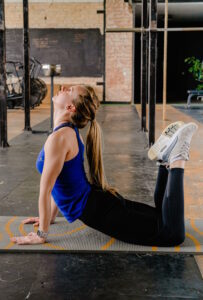
Pilates, a low-impact exercise system known for its focus on core strength, flexibility, and body awareness, has gained popularity among individuals seeking to achieve weight loss and body toning goals. In this comprehensive guide, we will explore the effectiveness of Pilates in promoting weight loss and body toning. We’ll also address common questions related to Pilates’ role in achieving these fitness objectives.
Can you tone and lose weight doing Pilates?
Yes, Pilates can help you both tone your body and lose weight, although its impact on weight loss may not be as significant as some high-intensity forms of exercise. Here’s how Pilates contributes to both objectives:
Toning: Pilates exercises are designed to engage and strengthen various muscle groups, with a particular emphasis on the core muscles. Regular Pilates practice can lead to improved muscle tone, increased strength, and enhanced posture. As you develop lean muscle mass, your body becomes more defined and toned.
Weight Loss: Pilates can support weight loss by increasing muscle mass, which in turn boosts your metabolism. A higher metabolism helps your body burn more calories even when you’re at rest. Additionally, Pilates can promote mindful eating habits and overall well-being, reducing the likelihood of overeating or stress-induced eating, which can contribute to weight loss.
While Pilates can be effective for toning and supporting weight loss, it’s essential to complement your Pilates practice with a balanced diet and other forms of exercise to maximize weight loss results.
Is Pilates better for weight loss or toning?
Pilates is effective for both weight loss and body toning, but its primary emphasis is on toning and overall body conditioning. It’s important to understand that Pilates may not provide the same level of calorie burn as high-intensity cardio workouts like running or cycling, which are often more effective for weight loss.
Pilates is particularly beneficial for body toning and shaping for several reasons:
1. Muscle Engagement: Pilates exercises engage multiple muscle groups simultaneously, resulting in leaner, toned muscles.
2. Core Strength: A strong core is the foundation of Pilates, and a toned core can significantly improve your overall physique.
3. Posture Improvement: Pilates helps correct poor posture, making you appear taller and more toned.
4. Mind-Body Connection: Pilates encourages mindfulness and body awareness, promoting a balanced approach to fitness and overall well-being.
5. Injury Prevention: Its low-impact nature makes Pilates suitable for individuals recovering from injuries, allowing them to focus on toning and strengthening without undue strain.
In summary, Pilates excels in body toning, core strength, and overall muscle conditioning. While it can contribute to weight loss, it may not be as effective for shedding pounds as high-intensity cardio workouts. To achieve optimal results, consider incorporating a mix of Pilates, cardiovascular exercise, and a balanced diet into your fitness routine.
Does Pilates tone your body quickly?
The speed at which Pilates tones your body depends on several factors, including your fitness level, the frequency and intensity of your Pilates sessions, and your diet. Here’s what you can expect:
Beginners: If you’re new to Pilates, you may start to notice improved muscle tone and body awareness within a few weeks of regular practice. Pilates is effective for beginners because it activates and strengthens muscles that may have been underused in other forms of exercise.
Intermediate Practitioners: Those with some experience in Pilates can experience more noticeable changes in muscle tone and overall body condition within a few months of consistent practice. Intermediate-level exercises introduce a wider range of movements and challenges that contribute to toning.
Advanced Practitioners: Advanced Pilates practitioners, who have mastered the full range of exercises and sequences, typically enjoy a well-toned physique and improved posture. However, achieving advanced-level proficiency may take several months to years of dedicated practice.
It’s important to remember that individual results can vary widely. Consistency in practice and adherence to healthy dietary habits play significant roles in how quickly you see toning results from Pilates. Moreover, combining Pilates with other forms of exercise, such as cardiovascular workouts or strength training, can expedite the toning process.
Does Pilates help you lose fat and weight?
Pilates can be a valuable component of a weight loss regimen, but it may not be the sole solution for substantial fat loss or significant weight reduction. Here’s how Pilates contributes to fat loss and weight management:
Calorie Burn: Pilates burns calories, particularly in more intense or advanced sessions. However, it may not provide the same level of calorie burn as high-intensity cardio workouts.
Muscle Building: Pilates builds lean muscle mass, which can increase your metabolism and help your body burn more calories even when you’re at rest.
Mindful Eating: The mindfulness cultivated in Pilates practice can promote better eating habits and reduce the likelihood of overeating or emotional eating, contributing to weight management.
Stress Reduction: Pilates incorporates relaxation techniques and mindful breathing, which can help reduce stress. Lower stress levels may lead to improved weight management by reducing stress-induced eating.
Balanced Approach: Pilates encourages a balanced approach to fitness and well-being, which can complement other weight loss strategies like a healthy diet and cardiovascular exercise.
In summary, while Pilates can support weight loss and fat reduction through increased calorie burn, muscle building, and stress reduction, it is most effective when combined with a comprehensive fitness and nutrition plan. To achieve significant weight loss, it’s advisable to incorporate Pilates into a holistic approach that includes cardio workouts, strength training, and a balanced diet.
In conclusion, Pilates is a valuable practice for both weight loss and body toning, with its effectiveness depending on your goals, consistency, and overall approach to fitness and well-being. Incorporating Pilates into a well-rounded fitness routine can lead to improved muscle tone, enhanced strength, and a healthier, more balanced body composition.